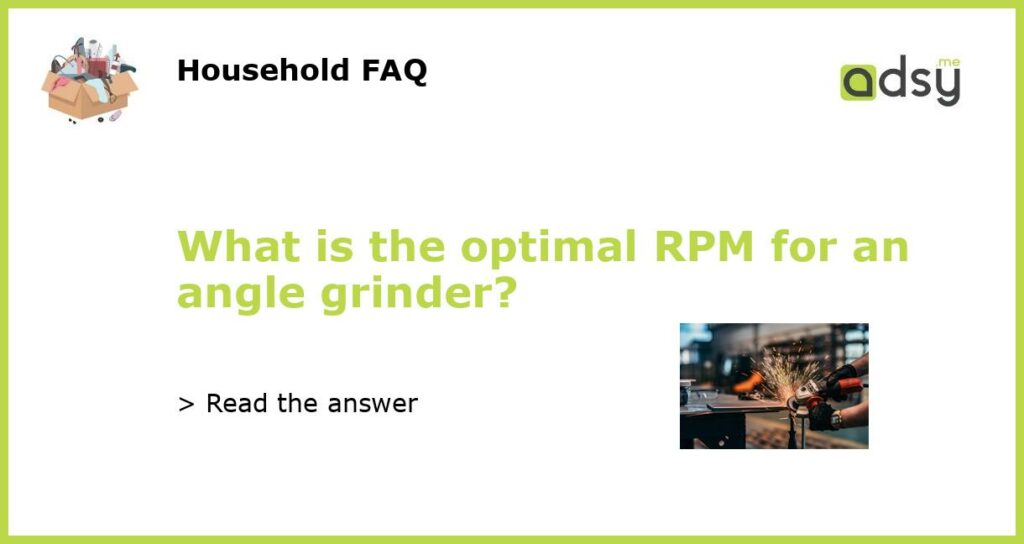Understanding the Optimal RPM for an Angle Grinder
An angle grinder is a versatile tool used for grinding, cutting, and polishing materials such as metal, stone, and concrete. To achieve the desired results, it is crucial to use the tool at the right speed, which is measured in revolutions per minute (RPMs). But what exactly is the optimal RPM for an angle grinder? Let’s find out:
Factors that Affect the RPM
Before delving into the optimal RPM for an angle grinder, it is important to understand the factors that affect the RPM. The RPM of an angle grinder is determined by the motor’s speed, the blade size, and the manufacturer’s specifications. As a general rule, larger blades require lower RPMs, and vice versa. In addition, the material being worked on, the type of attachment being used, and the skill level of the operator can also influence the RPM.
Determining the Optimal RPM
The optimal RPM for an angle grinder depends on the type of material being worked on and the type of attachment being used. Typically, the higher the RPM, the better the cutting and grinding performance. However, using an angle grinder at higher RPMs than recommended can increase the risk of accidents, such as kickback and broken blades. To determine the optimal RPM for a specific task, it is essential to refer to the manufacturer’s instructions and follow them carefully.
Best Practices for Safe Use of an Angle Grinder
While the optimal RPM is essential for getting the desired results with an angle grinder, it is just as important to observe safe practices when using the tool. Some of the best practices for safe use of an angle grinder include wearing protective gear such as goggles, gloves, and a face shield. Also, make sure the blade is sharp and free of any damage before use, and always secure the workpiece to a stable surface. In addition, keep the tool away from flammable materials and use the correct type of blade for the task.
The Bottom Line
The optimal RPM for an angle grinder varies depending on several factors, including the material being worked on, the type of attachment being used, and the manufacturer’s specifications. Always refer to the manufacturer’s instructions to determine the suitable RPM for a particular task and use safe practices when operating the tool to reduce the risk of accidents and injuries.






